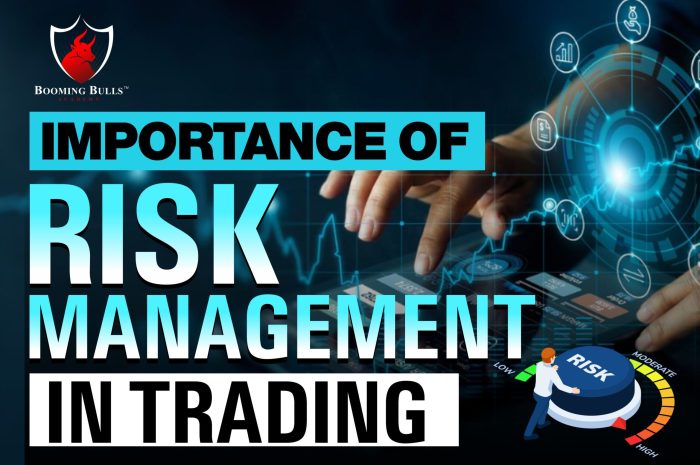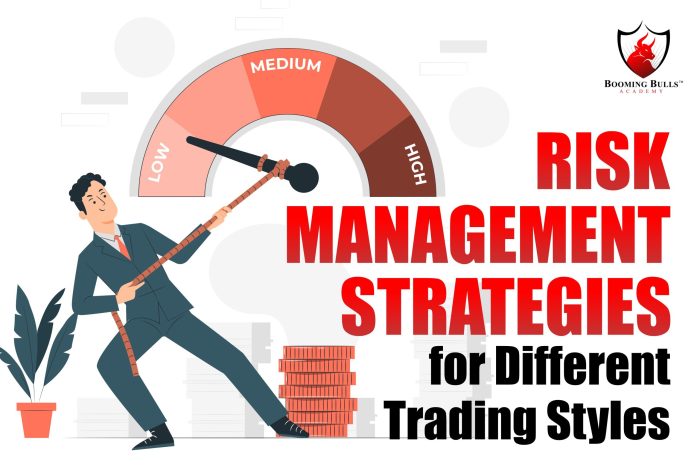
Exploring the realm of risk management in trading through the lens of daily finance insights, this article delves into the importance of leveraging financial data for informed decision-making.
Highlighting key strategies and tools, it aims to equip traders with the necessary knowledge to navigate the complex world of finance with confidence.
Importance of Daily Finance Insights
Daily finance insights play a crucial role in risk management for traders in the financial markets. By staying informed about the latest trends, news, and developments in the financial world, traders can make more informed decisions and mitigate potential risks.
Examples of How Daily Finance Insights Help Traders
- Market Analysis: Daily finance insights provide traders with valuable market analysis, helping them understand the current state of the market and identify potential opportunities or threats.
- Economic Indicators: Insights into key economic indicators such as GDP growth, unemployment rates, and inflation can help traders anticipate market movements and adjust their strategies accordingly.
- Corporate News: Updates on company earnings, mergers, acquisitions, or regulatory changes can impact stock prices, and traders who are aware of these developments can make more informed trading decisions.
Impact of Using Daily Finance Insights on Minimizing Risks
- Reduced Uncertainty: By staying informed about daily finance insights, traders can reduce uncertainty and make decisions based on data rather than speculation.
- Timely Reactions: Daily finance insights allow traders to react quickly to market changes, minimizing potential losses and maximizing profits.
- Diversification: Insights into various asset classes and markets can help traders diversify their portfolios, spreading risk and reducing the impact of market fluctuations.
How to Access Daily Finance Insights

Accessing daily finance insights is crucial for effective risk management in trading. Here are some ways traders can stay informed:
1. Different Sources for Daily Finance Insights
- Financial News Websites: Websites like Bloomberg, CNBC, and Reuters provide up-to-date financial news and analysis.
- Market Analysis Platforms: Platforms such as TradingView, Bloomberg Terminal, and Yahoo Finance offer in-depth market analysis and insights.
2. Setting Up Alerts for Daily Finance Insights
- Subscription Services: Many financial websites offer email alerts or push notifications for breaking news and market updates.
- Custom Alerts: Traders can set up custom alerts on trading platforms based on specific criteria or s to receive relevant insights.
3. Benefits of Automated Tools vs. Manual Research
- Automated Tools: Using automated tools like trading algorithms and AI-driven platforms can provide real-time insights and analysis, saving time and effort.
- Manual Research: Conducting manual research allows traders to delve deeper into specific topics and gain a more nuanced understanding of market trends and events.
Analyzing Daily Finance Insights
In trading, analyzing daily finance insights is crucial for effective risk management. By focusing on key financial metrics and indicators, interpreting trends and patterns, and using historical data, traders can make informed decisions to mitigate risks and maximize profits.
Key Financial Metrics and Indicators
- One important metric to focus on is volatility, which measures the degree of variation of a trading price series over time. High volatility indicates higher risk, while low volatility suggests lower risk.
- Another key indicator is liquidity, which refers to how easily an asset can be bought or sold without causing a significant change in its price. Low liquidity can lead to higher trading costs and increased risk.
- Profit margins and earnings growth are essential financial metrics to consider, as they reflect the profitability and growth potential of a company. Declining profit margins or earnings may indicate increased risk.
Interpreting Trends and Patterns
- Traders can identify trends by analyzing price movements and volume data. An upward trend suggests a bullish market, while a downward trend indicates a bearish market.
- Patterns such as support and resistance levels, moving averages, and chart patterns like head and shoulders can help traders predict future price movements and manage risks effectively.
- Technical analysis tools like RSI (Relative Strength Index) and MACD (Moving Average Convergence Divergence) can also be used to interpret trends and patterns from daily finance insights.
Using Historical Data for Risk Assessment
- Historical data can provide valuable insights into how assets have performed in the past under similar market conditions. By analyzing historical price data, traders can identify patterns and trends that may help predict future price movements.
- Backtesting trading strategies using historical data can also help traders assess the effectiveness of their risk management techniques and make adjustments as needed.
- By combining historical data with daily finance insights, traders can develop a comprehensive risk management strategy that takes into account both past performance and current market conditions.
Implementing Daily Finance Insights for Risk Management
Integrating daily finance insights into your trading strategy can be a powerful tool for managing risk effectively. By utilizing these insights, you can make informed decisions that can help mitigate potential losses and maximize returns.
Role of a Financial Advisor in Utilizing Daily Finance Insights
- Offering personalized advice based on your financial goals and risk tolerance.
- Monitoring market conditions and identifying opportunities for strategic adjustments.
- Providing recommendations on portfolio diversification to minimize risk exposure.
Financial advisors play a crucial role in helping traders leverage daily finance insights for risk management. They can provide valuable expertise and guidance in interpreting market trends and identifying potential risks. Here are some key ways financial advisors can assist:
Balancing Intuition with Data-Driven Decisions
- Use data to inform your decisions, but trust your instincts when necessary.
- Validate your intuition with data analysis to ensure a well-rounded perspective.
- Regularly review and adjust your trading strategy based on both data-driven insights and your gut feeling.
While daily finance insights provide valuable data for decision-making, it’s also important to balance this with intuition and gut feeling. Here are some tips on striking the right balance:
Future Skills Program for Financial Risk Management

Future Skills Program plays a crucial role in enhancing financial risk management by equipping professionals with the necessary knowledge and skills to navigate the complexities of the modern trading landscape.
Importance of Future Skills Program in Understanding Financial Risks
Continuous learning and upskilling through Future Skills Programs enable individuals to stay updated with the latest trends, technologies, and regulations in the financial markets. This knowledge is essential in identifying and assessing potential risks effectively.
Role of Technology in Enhancing Risk Management through Daily Finance Insights
Technology, such as AI and machine learning, plays a significant role in enhancing risk management by providing real-time data analytics and insights through daily finance updates. These insights help traders make informed decisions and manage risks more efficiently.
Examples of How Continuous Learning Improves Risk Assessment in Trading
- Regularly attending workshops, webinars, and seminars on risk management techniques can help traders identify and mitigate potential risks in their trading strategies.
- Participating in online courses on financial modeling and data analysis can enhance analytical skills, enabling traders to make better-informed decisions based on market trends and patterns.
- Engaging in case studies and simulations that simulate real-life trading scenarios can provide practical experience in managing risks effectively.
Conclusion
As we wrap up our discussion on using daily finance insights for risk management in trading, it becomes clear that staying informed and analytical is key to mitigating risks and maximizing opportunities in the market.
Frequently Asked Questions
What are the key financial metrics to focus on for risk management?
Traders should pay attention to metrics like volatility, liquidity ratios, and price-to-earnings ratios for effective risk management.
How can historical data be used alongside daily finance insights for risk assessment?
Historical data can provide context and trends that can help traders better evaluate current market conditions and make informed decisions.
What is the role of a financial advisor in utilizing daily finance insights for risk management?
A financial advisor can provide personalized guidance on interpreting financial data and implementing risk management strategies tailored to individual trading goals.







